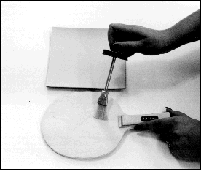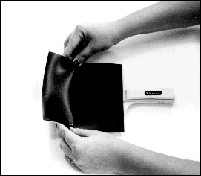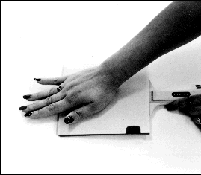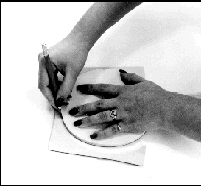|
|
||
|
|
||
|
|
HOW TO CHANGE RUBBER
When to Change Rubber No matter how well you take care of your
paddle's rubber, the day will come when you will need to replace it or
get a new paddle. Over time, the rubber will crack, chip, tear, dry out
and wear down, losing its original characteristics. How often should you change the rubber? Typically,
you'll find that today's high performance rubbers drop in performance
after 40 to 60 hours of play. For that reason, most world class players
change their rubber every week. However, most average players replace
their high performance rubber every six to nine months. Pips-out and
anti-spin rubbers routinely last longer; from one to two years. Replacing rubber or gluing rubber to a new paddle is relatively easy. It does require a few simple tools, and learning some basic techniques. Getting Started The equipment needed includes acetone, an eye dropper, a sharp exacto knife, paddle cement, and a stiff bristled brush. Start by removing the old rubber. If it will not pull off easily, use an eye dropper to put small amounts of acetone between the sponge and the blade surface while peeling the rubber off gently. After you take the rubber off, make sure that the blade is completely clean and smooth. Use 100 grade sand paper if necessary. Next, apply the glue to one side of the blade with a stiff bristled brush. You want enough glue to cover the entire surface evenly with a thin layer. It is important not to use too much glue because in that event you will produce clumps, resulting in an uneven playing surface.
Brush the paddle cement evenly onto the blade and rubber. After applying glue to your blade, do the same thing to the back side of your rubber sheet. When this is done, let the glue on both the blade and rubber dry completely. This usually takes about five minutes. Applying the Rubber Carefully line the bottom of the rubber sheet up with the bottom of the hitting surface as shown in Figure 2. Then slowly roll the rubber out to the end, avoiding any air bubbles between the rubber and the blade. To get a good seal between the rubber and the blade, put a piece of plastic or paper over the rubber surface and press down with the heel of your hand, as shown in Figure 3. You can also place the blade flat on a tabletop and push down on it against the table.
Attach the bottom edge of the rubber sheet and roll it onto the blade.
Press with the heel of your hand to get a good seal between rubber and blade. Cutting the Rubber Turn the paddle over so that the rubber surface you just attached is facing the table. Holding the paddle in place and using the outside of the blade as your guide, cut the excess rubber off with the exacto knife. Always use a very sharp blade to get a smooth cut. To make cutting the rubber easier, put the blade on the end of your table so that the handle extends off the table. This will keep the paddle flush with the table during cutting. To protect the table's surface, put a piece of cardboard, or the package the rubber came in, under the blade while you cut.
Trim the excess rubber from the paddle using a sharp knife. Repeat the same steps for the other side of the paddle. When you have finished, put a piece of edge tape around the outside edge of your paddle to protect the edge and give it a finished look. Copyright Paddle Palace |
|
|
Last Update : 06 November, 2002 Copyright ┬ę 2001-2006 Ertan Patir Webmaster : |




